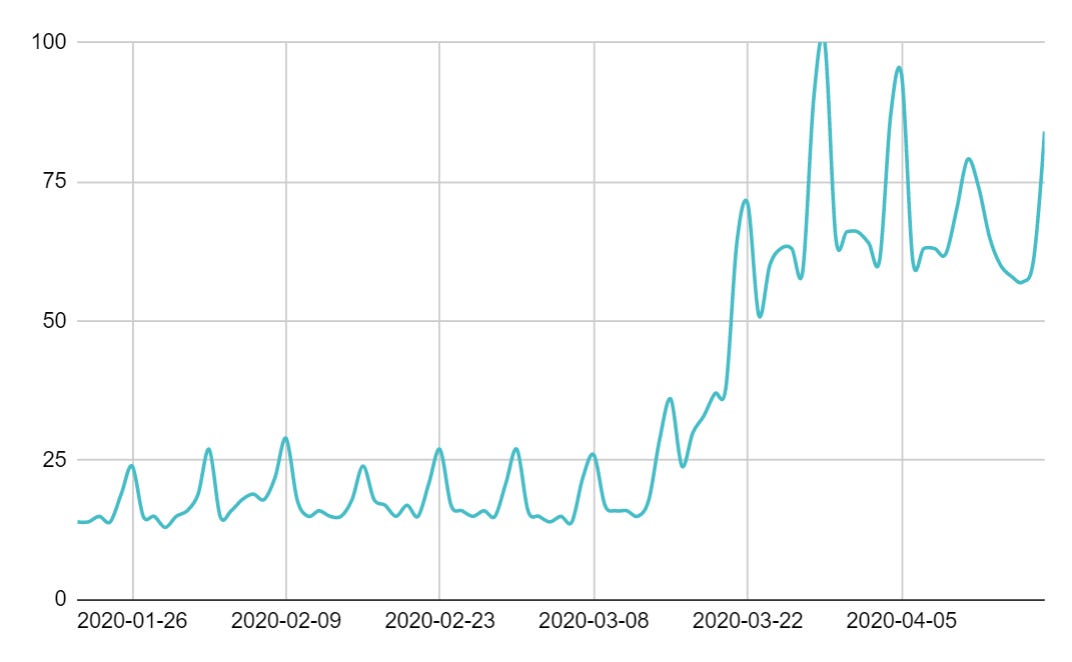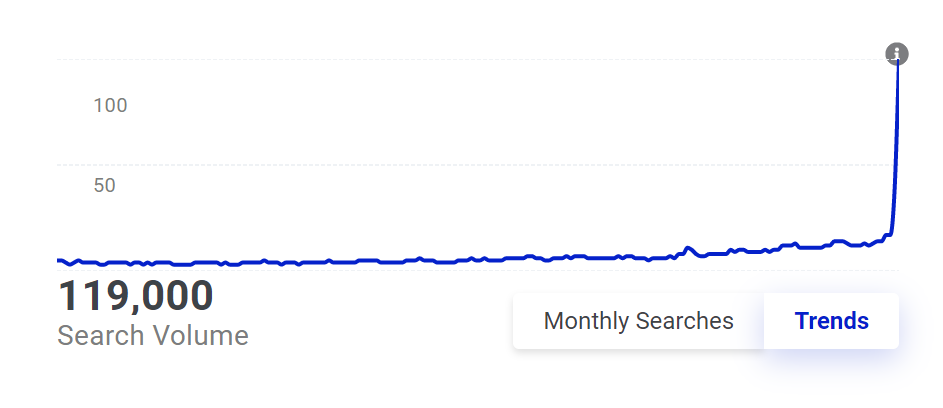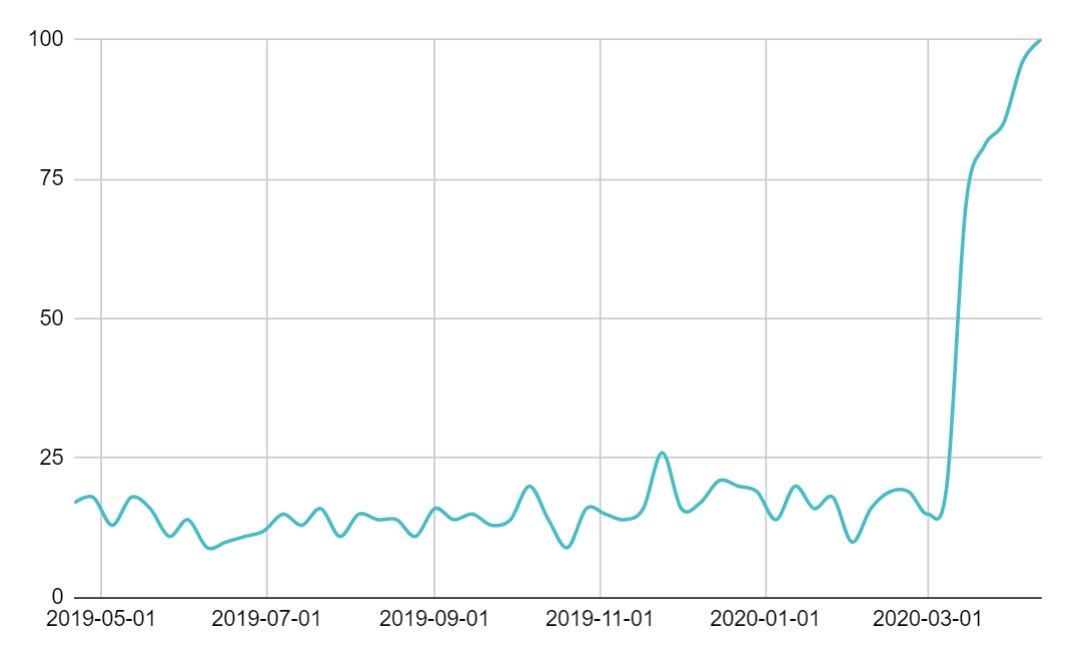⚡ If you start this business, I want to be a part of it, PLEASE.

The Signal
"Ideas won't keep. Something must be done about them."
Alfred N. Whitehead
You're in for a treat this week.
We're diving into the world of... um, bread. Yup, your good ol' loaf-a-bread. 🍞
Before you click away, already, it's more exciting than it sounds - promise.
We're going to be building a $8700-a-month (after 3 months) revenue business from scratch, together.
Ready? Strap in. Let's go.
// A quick side note. You might have noticed I missed a few weeks (I hope?). You noticed correctly. - sorry. A certain virus got the best of me and a few family members periodically (we're all healthy again) and it was a tumultuous period. I'm back, though.
Clickworthy
// Valuable tidbits from around the interweb.
🧠 HBR on why we need imagination more than ever.
💲 Answering the question of "What happens when you print money" - A simple guide to the world economy
💡 The art of innovation
The Breakdown
// The idea you can capitalize on this week.
Stop loafing around, c'mon. We're not. This week there's bread to be won (And there are more where those came from).
The signal clearly comes from the fact that Sars-Cov-2 has everyone home-bound. There are more people spending more time at home than ever before.
So what do bored people do when they're home? They bake, apparently.
Look at the interest for the search term "banana bread" over the past 3 months:

Data from: Google Trends
The little peaks are for weekends - when people do their most baking. But look at the last 30 days!
But its not just banana-bread that's going banana's. The upward trend applies the whole baking niche. Look at the trend on the term "Sourdough".

Data from: Mangools
If you need more evidence, check out the interest in "home made bread":

Data from: Google Trends
It's the type of curve that makes VC's weak at the knees.
So, a sharp increase in demand. How can we supply?
Getting Started
// Getting your first paying customers. Money in the bank, baby!
There are more people than ever interested in making their own bread.
In my opinion as people discover the health benefits and enjoyment of it (when you know, you know. There's nothing better than a freshly baked loaf straight outta' the oven), they'll be inclined to keep doing it post-Rona.
The opportunity is definitely there. A long-term strategy shouldn't be discounted either.
2 Options
Ship a product. Ship a service.
I chose a service. It's easier to get off the ground at the moment, with limited economic activity happening and people buying fewer physical 'things'.
The options:
Online course
eBook
Niche site
Coaching
I see speed-to-market as essential here. Get in as soon as possible.
The two options which lend themselves to that are 1. and 2. Honestly, choose whichever you're more comfortable with and then dive in.
Let's go with a $29 eBook: Making Homemade Bread for Beginners.
Step 1
See one. Do one. Teach one.
See one: If you know little to nothing about bread, then learn. Go through the motions of reading resources online and make your first loaf. Take 3 days to fully immerse yourself. Watch YouTube videos, read recipes. You're not becoming an expert, you're learning enough to make your first loaf.
Do one: Once you've got enough info, get-a-bakin'!
Teach one: Record your journey. Note the difficulties, fun parts, hard parts and any other interesting notables you pick up on the way. You want your customer to feel like you're going through the process with them.
Take more pictures and videos than you think is necessary. Use a little phone-holder-tripod or a DSLR and a tripod (if you have). Document everything!
Don't be perfect, be authentic.
Quick Tip
Here's something that'll set your eBook apart from other resources: Get advice from humans.
"Aunt Heidi recommends adding a touch of nutmeg to this recipe."
"It goes great with this recipe for Vegetable soup."
"If you prefer denser bread, prove only 3 times, not 4."
Stupid examples, but they make a difference. Highlight them. Human's like relatable things. Nothing more relatable than Aunt Heidi whispering suggestions in your ear while you bake.
Step 2
Set the scope for your eBook. You can't do everything, so pick the absolute basics that every beginner should know. You can always expand into further niches like "Sourdoughs" later on.
The priority right now is: Product out the door.
Step 3
Put your knowledge together coherently.
Summarize your findings, and make it easy for a beginner to understand. Make the process methodical, fun and educational. Think about the good parts of your learning journey. Put them in there.
Include media!
This shouldn't take more than a week. If it does, you're being too detail orientated. Remember: product out the door!
Ignore the imposter syndrome, its a fallacy.
Tools
Some tools to help if you've got no clue how to write an eBook:
Google Docs (Yes, it can be that simple)
Adobe InDesign (If you're thatta way inclined)
Some Templates (Courtesy of Hubspot - Powerpoint or InDesign compatible)
Remember: Customers want value. Aesthetics are a nice-to-have, not an essential.
Step 4
You've got a product - fantastic.
Now, let's sell it.
Your first 50 customers are your most difficult. Overcoming the inertia of being stationery is hard work.
// A note: To get the ball rolling, you have to leverage your network. The more shameless you are about the process the better. Own what you're doing and ask people for help. Their response might surprise you.
To Do's:
Set up a place to send people. Use Mailchimp, Instapage, or Wordpress (if you've done it before and can do it quickly) for landing pages, or Gumroad for a full solution. Make sure you can collect emails. Mailchimp works well because it's all in the same environment (and free, to start). Make sure the process is as quick as possible. Don't spend too much time making it look pretty.
Share your learning process on your socials. Make it engaging and genuine. Post your bad pictures, funny videos and recipes. People love free shit - even if it's a recipe. Don't waste time setting up new accounts. Do it on your personal page where there are already followers.
Do some outreach. Food bloggers, friends with lots of Instagram followers and generally anyone who has an audience who has anything to do with baking, bread or food. Give them your product, ask for critique. Reach out to 100 people. You'll maybe get 10 replies. Don't get disheartened. Ask friends and family to share your product. Keep doing the work.
Use the critique the people reply with (if they do) and improve your eBook. Then ask if they'd like to partner with you.
Share revenue with them for every deal they refer. This model works.
Keep doing this, it becomes easier with social proof. As you're able to say "Blogger X and Influencer Y are also partners", people think Hmm, maybe this is worth considering.Keep at it. Seriously, don't quit. There is demand.
50 customers at $29 = $1450 revenue. And we're just getting started.
Let's Grow
// Idea validated. Now let's make a proper business of it.
First orders shipped. Feels good to get some money in the bank, right? Now let's get that to 300 orders a month. 10 a day. You can do it.
Step 5
Grow your partner network.
The thing about selling something in a niche is... it's a niche. Not everyone is going to want it. We've proven there's demand though, so making sure you get your product in front of enough eye's is key.
The same process you went through in getting your first 50 customers, do that every single month. Build a cold email template that works and reach out to potential partners every single month.
It's a volume game. If you get 10 new partners every month, each referring 10 deals every month. Within 3 months you'll have 300 sales a month. $8700 revenue.
Step 6
Work out a PPC strategy.
This is the first money we're going to be spending acquiring customers. Up until now, you've been doing it with elbow grease. But you've only got so much time available.
This is isn't a PPC lesson, so here are some basic steps (Google it - there are loads of resources and it's not as complicated as it seems. Start with a normal campaign, don't go for Display Ads just yet):
Set up some tracking. (link is for Gumroad. If you're using a landing page + payment provider, you'll be wanting to track those buttons)
Set a budget, start bidding.
Review, optimize, rinse and repeat.
As you get a better feel for the Google Ads platform, you will get better at expanding. As with this whole process - start simple, and then muck into the details.
Step 7
Rollin' in the dough, baby.
Well, $8700 monthly revenue. From one product.
If all goes well, expand into a niche site, spend more time and build an online course. Charge more for better content. Write another eBook for intermediate bakers. Partner with your local baker for a Bread Masterclass. As you learn more, expand and improve.
If nothing goes well - you spent no money (unless you got to the PPC step too early) but learnt a lot.
The End Notes
// I know, I know. I can almost hear you saying "Don't go, don't go."
I'll be back in next week with the regular Signal. These dives are bi-weekly. They take a bit of time.
If you've found this interesting, valuable or entertaining, a few of your friends might too. Please forward on to them.
If you want to support in other ways, reply to this email with some feedback and your honest thoughts - please.
See you next week, thanks for reading!
- Simon
PS: As always - I'd appreciate your feedback, please? (or you can just reply to this)

